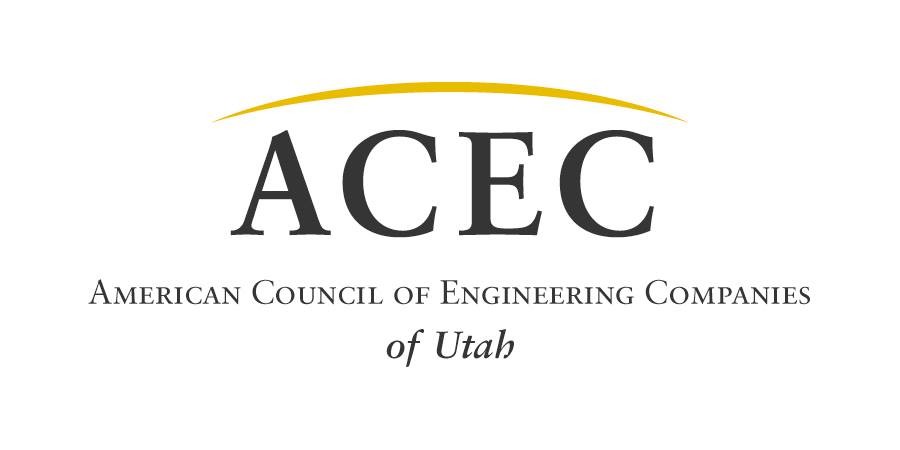The Growing Urgency of Resilient Infrastructure: Preparing Utah for Tomorrow’s Challenges
 In an era marked by dynamic changes in climate, population growth, and technological advancements, the need for resilient infrastructure has never been greater. Across the nation, communities are grappling with increasingly severe weather patterns, resource scarcity, and aging systems. Here in Utah, these challenges are magnified by a rapidly expanding population, evolving industries, and unique geographic vulnerabilities. The question is not whether we can adapt, but how quickly and effectively we can act to strengthen our infrastructure for the future.
In an era marked by dynamic changes in climate, population growth, and technological advancements, the need for resilient infrastructure has never been greater. Across the nation, communities are grappling with increasingly severe weather patterns, resource scarcity, and aging systems. Here in Utah, these challenges are magnified by a rapidly expanding population, evolving industries, and unique geographic vulnerabilities. The question is not whether we can adapt, but how quickly and effectively we can act to strengthen our infrastructure for the future.
As the leading advocate for Utah’s engineering industry, ACEC Utah is committed to driving resilience at every level of infrastructure development. This commitment reflects not only a responsibility to the public welfare but also a recognition of the engineering profession’s pivotal role in shaping the security and prosperity of our state. In this blog, we explore the principles and approaches that define resilient infrastructure, highlight projects that exemplify these strategies, and outline the critical contributions of Utah’s engineering community in addressing this urgent need.
What is Resilient Infrastructure?
Resilient infrastructure refers to systems designed to withstand disruptions, recover quickly from setbacks, and adapt to evolving conditions. Whether it is transportation networks built to endure extreme weather events, water systems capable of safeguarding supply during droughts, or energy grids equipped to handle demand fluctuations, resilience is about preparing for the unexpected.
Resilience does not mean simply reinforcing what already exists; it requires a forward-thinking approach to design, materials, and system integration. Engineers must anticipate future stresses—whether environmental, social, or technological—and address vulnerabilities before they impact public safety or economic viability. Importantly, resilient infrastructure fosters sustainability and equity, ensuring systems last longer and serve the needs of all Utahns.
Challenges Unique to Utah
Utah faces distinct challenges requiring targeted solutions. Climate projections indicate that our state will experience worsening droughts, extreme storms, and rising temperatures, all of which put strain on critical infrastructure. Utah’s mountainous terrain and significant stretches of rural development bring additional complexity, calling for customized approaches that address risks unique to our geography.
At the same time, Utah’s population growth continues at one of the fastest rates in the nation. This growth has led to increased demand for transportation, energy, housing, and water systems. To sustain our communities and economic competitiveness, Utah must plan far ahead, ensuring that infrastructure built today will support the demands of tomorrow.
While Utah’s challenges are significant, our state is uniquely positioned to lead. The collaborative efforts of state agencies, private firms, and local communities—combined with Utah’s entrepreneurial spirit—continue to produce innovative engineering practices that provide the blueprint for nationally recognized solutions.
ACEC Utah’s Role
Resilient infrastructure depends on the expertise and creativity of engineering professionals. ACEC Utah ensures the voice of engineers is at the forefront of decision-making, advocating for policies and investments that prioritize resilience. We work closely with policymakers to emphasize robust funding mechanisms, encourage risk-informed planning, and promote engineering excellence as a cornerstone of sustainable development.
Our member firms lead the way in designing infrastructure projects aligned with resilience principles. For example, Utah engineers have pioneered advanced water-management systems adapted to severe drought conditions and flood-resistant designs for vital transportation corridors. These contributions demonstrate how engineering transforms public challenges into sustainable solutions.
Looking Ahead: Collaboration is Key
Resilient infrastructure is not the responsibility of any single entity—it requires collaboration across public officials, private firms, and community organizations. Engineers can only deliver optimum results when all stakeholders understand the importance of resilience and work together toward shared goals. ACEC Utah encourages this collaboration by fostering partnerships, initiating conversations, and providing resources for stakeholders at every level.
Utah, with its deep tradition of innovation and its engaged engineering community, is well-positioned to meet this challenge head-on. The collective strength of ACEC Utah’s member firms ensures that resilience becomes an intrinsic part of every project undertaken across our state.
Building Today for a Stronger Tomorrow
Even as Utah continues to face challenges in climate adaptation, resource management, and infrastructure demand, resilient systems will enable our state to thrive. What we build today must be designed not just for current needs but for the needs of decades to come.
ACEC Utah invites everyone—from engineers to policymakers, community leaders, and educators—to join us in championing resilient infrastructure. Together, we can elevate Utah’s leadership in sustainability, security, and innovation, ensuring our communities remain strong for generations. Resilience is not just about preparation—it is about prosperity, and the engineers of Utah are ready to lead the way forward.






